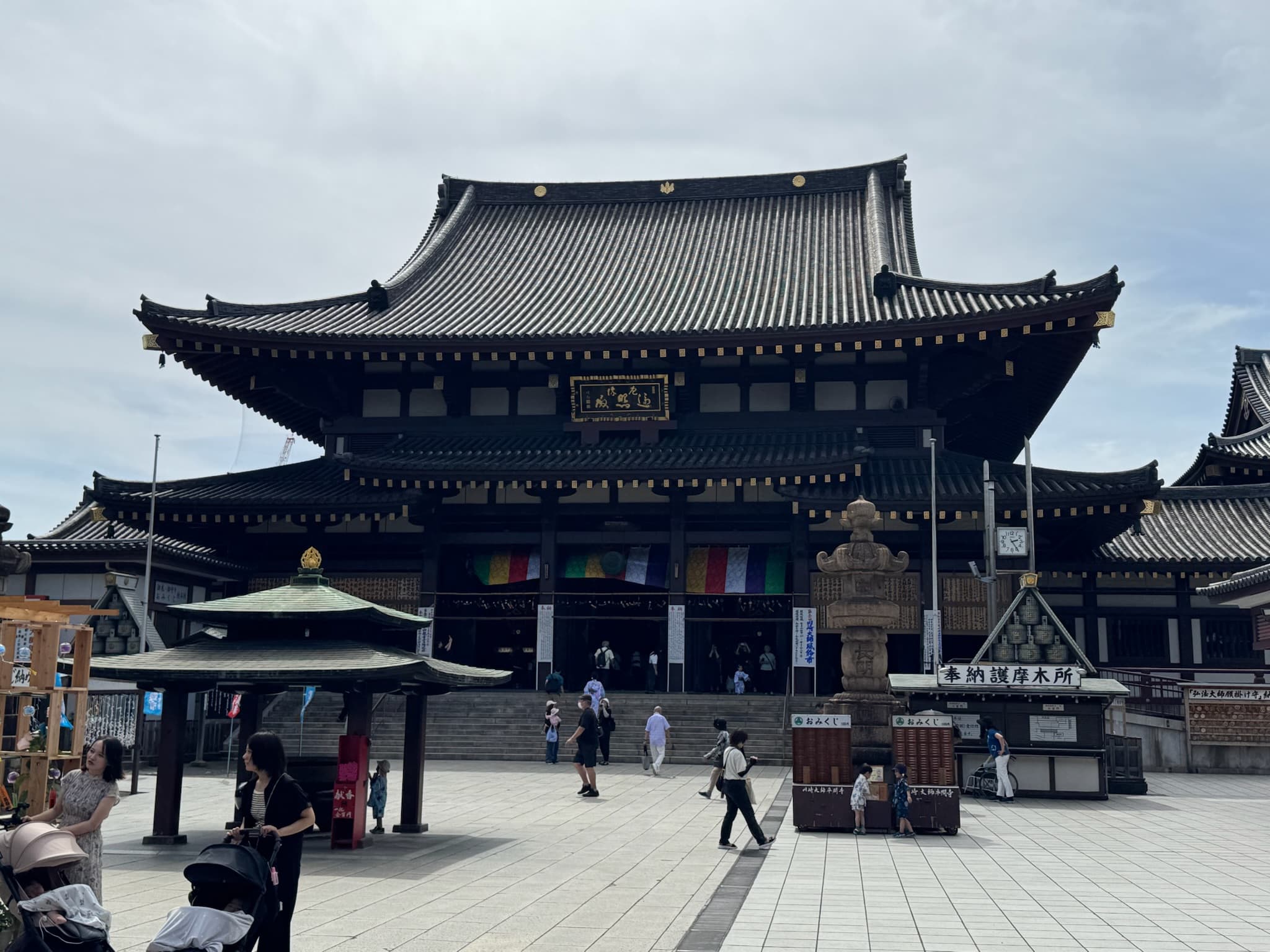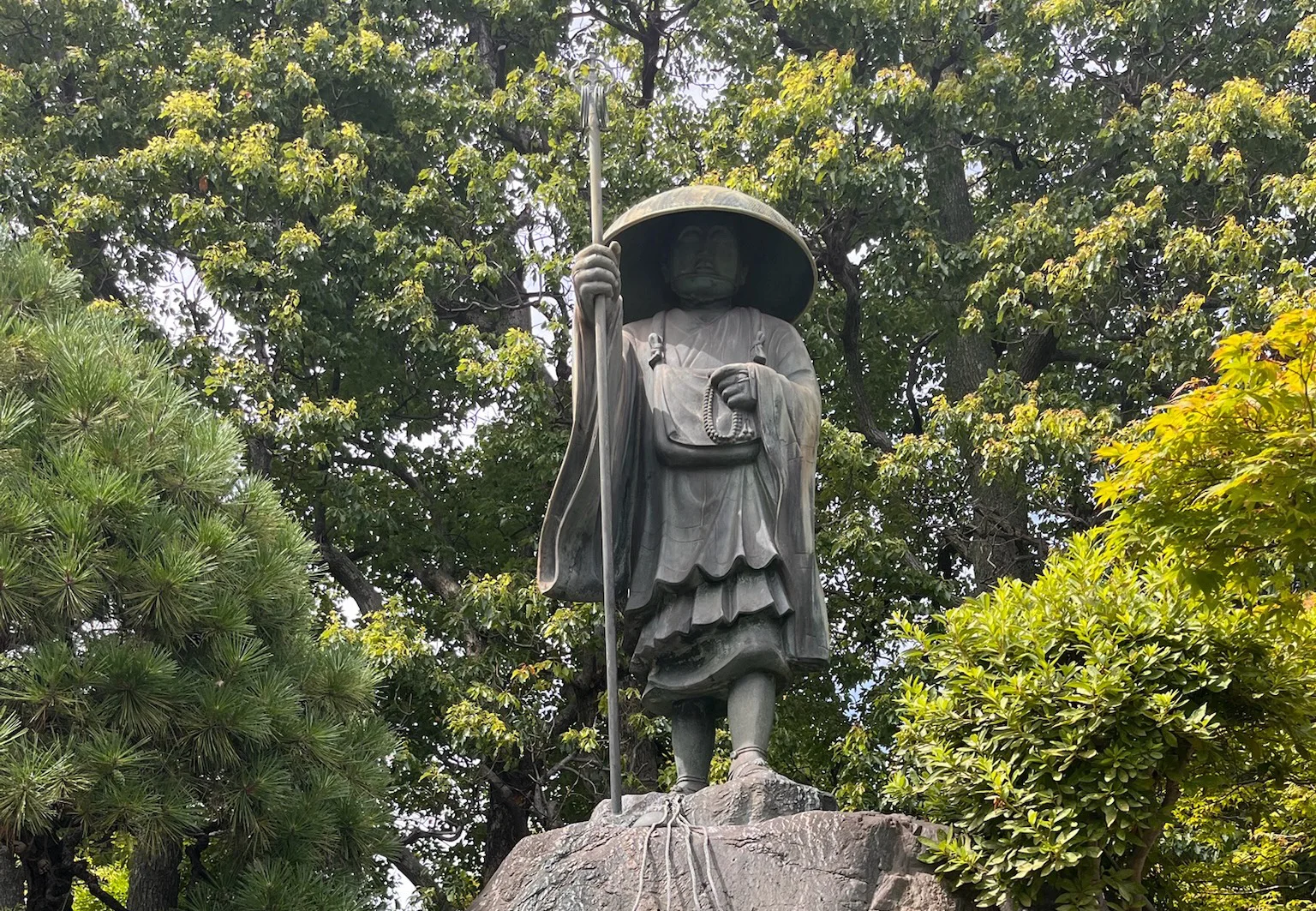
Kawasaki Daishi Heikenji Temple
川崎大師平間寺- Kawasaki StationKeihin-Tōhoku LineTōkaidō Main LineNambu Line
- 11 minutes bus drive to Kannon 2
- Walk 5 minutes
Kawasaki Daishi, formally known as Kongōzan Kinjoin Heiken-ji, is one of Japan’s most prominent temples of the Chisan school of Shingon Buddhism. Commonly referred to as the “Great Master of Warding Off Evil” (Yakuyoke Kōbō Daishi), it is renowned for its spiritual power to dispel misfortune and grant various blessings. The temple’s principal deity is Kōbō Daishi (Kūkai), the revered Buddhist monk who founded Shingon Buddhism in Japan.
Origins and Legends
The temple’s origins date back to the late Heian period, during the reign of Emperor Sutoku. A devout man named Hirama Kanenori, originally from Owari Province (present-day Aichi), was unjustly exiled from his homeland. He eventually settled in the Kawasaki area and lived modestly as a fisherman, all the while maintaining deep faith in Buddhism - especially in Kōbō Daishi (Kūkai), the founder of Shingon Buddhism.
At the age of 42 - a critical year of misfortune according to traditional beliefs - Kanenori received a divine revelation in a dream. In the dream, a high priest appeared and said: “Long ago, during my time in Tang China, I carved an image of myself and set it adrift in the sea. It has yet to reach a destined hand. If you now retrieve it from the sea and worship it, your misfortune will be turned into good fortune, and your wishes will be fulfilled.”
Following the guidance of his dream, Kanenori cast his net into the sea at a spot where a mysterious light shone. From the depths, he drew out a wooden statue - an image of Yakuyoke Kōbō Daishi. He purified the statue and began worshipping it daily in a humble hut, offering prayers each morning and evening.
One day, a revered monk named Sonken Shōnin from Mount Kōya happened to visit Kanenori. Upon hearing the story behind the statue, he was deeply moved. In 1128, the two established a temple and enshrined the statue of Kōbō Daishi as its principal deity. The temple was named Heiken-ji (平間寺), taking its name from Kanenori’s family name, Hirama (平間).
In 1134, Kanenori’s innocence was finally proven, allowing him to return to his homeland - further reinforcing the belief in the divine power of Kōbō Daishi and the temple.
Over time, Kawasaki Daishi became widely known for its miraculous ability to ward off misfortune. It garnered strong devotion from the Imperial family and, later, from the 11th Tokugawa Shogun, Ienari, who visited the temple to pray for protection. From the Edo period onward, the temple became a popular pilgrimage site for people across Japan seeking the blessings of the “Great Master of Protection”.
Today, Heiken-ji is regarded as one of the three head temples of the Chisan school of Shingon Buddhism, alongside Chishaku-in in Kyoto and Naritasan Shinshō-ji in Chiba.
Yakuyoke Kōbō Daishi

On the temple grounds stands a statue of Kōbō Daishi, which commemorates his famous pilgrimage around the 88 sacred temples of Shikoku Island - one of Japan’s most significant Buddhist pilgrimages. At the feet of the statue are traditional straw sandals known as waraji. These sandals are symbolic of Buddhist pilgrimage and humility. Kūkai himself is said to have worn waraji during his spiritual journeys, and over time, they came to represent the transient, persevering nature of the spiritual path.
Visitors to Kawasaki Daishi Temple often sprinkle water on the waraji before the statue while praying for health, endurance, and protection - especially when embarking on long journeys or personal pilgrimages.
Sacred Deities and Worship Halls at Kawasaki Daishi
The image of Kōbō Daishi (Kūkai, 774–835), founder of Shingon Buddhism and believed to ward off all evil, is enshrined at the center of the Main Hall (Daihondō). The Ogoma Kitō (fire ritual) is performed daily, offering prayers for world peace and the safety of all devotees.
In Fudō-dō, the wrathful deity Fudō Myōō - one of the Five Wisdom Kings - is enshrined. Regarded as an incarnation of Dainichi Nyorai (Mahāvairocana), the cosmic Buddha of Shingon Esoteric Buddhism, Fudō Myōō is surrounded by flames, symbolising the burning away of obstacles and defilements as he protects practitioners and guides them toward enlightenment.
At the Kyōzō (Sutra Repository), the principal image is Shaka Nyorai, the historical Buddha and founder of Buddhism.
The Yakushi-den (Yakushi Hall) houses a statue of Yakushi Nyorai, the Medicine Buddha. Visitors pray for the removal of illness, fear, and misfortune, seeking blessings of healing and well-being.
At the Ogoma Uketsukejo - the registration office for the fire ritual - visitors can submit written prayers for various wishes, which are later offered during the Ogoma ceremony.
In the Japanese religious tradition of blending Shinto and Buddhism, the temple grounds also include shrines to Shinto deities, such as Inari - the deity of rice, fertility, prosperity, and business success, often associated with fox messengers - and Seiryū Gongen - a dragon deity symbolising the Azure Dragon, a protector and guardian spirit in Japanese esoteric tradition.
A meaningful and sacred site as well as a stunningly beautiful landmark on the temple grounds is the Hakkaku Gojūnotō (Octagonal Five-Storied Pagoda). This striking structure embodies profound Buddhist symbolism and spiritual significance. Unlike the more common square-based pagodas, it features an octagonal base - a rare and important design in Japanese temple architecture.
The five stories of the pagoda represent the five elements of Buddhist cosmology - earth, water, fire, wind, and void (or sky) - which together symbolise the universe’s structure and the path toward enlightenment. The octagonal shape carries its own deep symbolism, often linked to the Noble Eightfold Path, the core teaching guiding practitioners toward liberation and spiritual awakening. It also signifies balance and harmony, embracing all directions and aspects of existence.
Another prominent feature of the temple is the Dai-Sanmon, the main gate. Guarding the entrance are statues of the Four Heavenly Kings, powerful protectors who watch over the four compass directions, ensuring the temple grounds are safeguarded from evil influences.
Related topics
At Hey Japan!, we strive to keep the places listed on our website as current as possible. However, it is important to note that location owners or management may make changes to their plans, including canceling events, altering opening times, or modifying admission requirements, without prior notice. To ensure that you have the most accurate information, we recommend checking official websites before visiting any location.
Last Updated:















